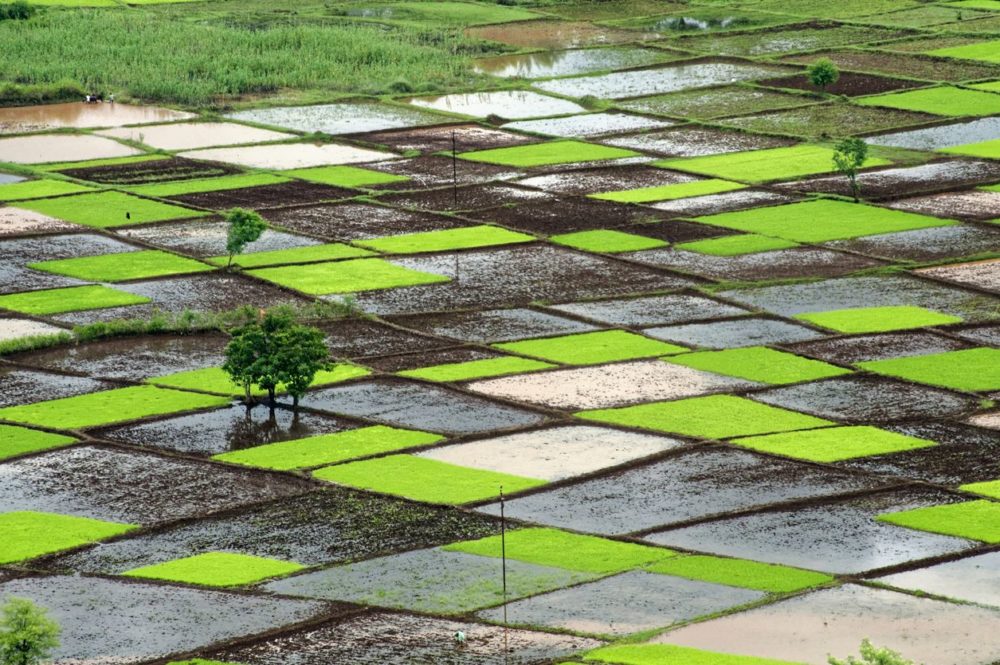At a time when tech adoption was still low in Indian agriculture, two Pune-based computer engineers began working on a software solution to bring digitalization to the industry.
In 2006, FarmERP — the brainchild of Sanjay Borkar and Santosh Shinde, who both came from agricultural families — was released. The objective behind the platform was to systematize farming operations to make them more efficient, profitable, and predictable.
Enterprise resource planning for farms
India is a superproducer when it comes to agriculture; it’s one of five countries that produce over 80% of the world’s total ag output. It ranks first in the world in milk and pulses production, and is the world’s second largest producer of rice, wheat, sugarcane, groundnut, vegetables, fruit, and cotton, according to the UN Food & Agriculture Organization.
Even with these stellar output figures, India grapples with barriers to productivity. Borkar had witnessed first-hand how poor infrastructure and disorganization costs farmers, who find it difficult to get decent prices for their produce and are often left at the mercy of market forces.
“Depending on the kind of market one is in, it decides how much you’re going to earn. So, the value of produce is not dependent on what is grown, but how much the market values the produce,” he says.
This, he adds, makes it difficult for farmers to predict the profits they would make at the end of the season.
For Borkar, scant adoption of technology and best practices exacerbated these problems.
Consequently, he and Shinde released the first prototype of FarmERP, built around the needs of their first client; later on, those features were standardized. Its early users were mainly growers, co-operatives, and non-governmental organizations.
The startup’s only publicly reported fundraising round came in December 2019 when it secured an undisclosed amount of Series A funding from a Singapore-based investor named Technogen.
How it works
FarmERP’s B2B solution serves agribusinesses, with mid- to large-sized farms of between 1,000 and 100,000 hectares, by digitalizing their financial management processes. Users can track their finances through modules like accounting, costing, and procurement reports. They can also track, manage, and analyze data on crop health and supply chain processes.
Clients typically get an annual subscription, which can run for three, five, or seven years. They get training, basic data migration, and system customization according to their needs. FarmERP can also integrate with their existing smart devices, such as automated weather stations, irrigation systems, sensors, and drones.
The platform allows users to calculate machinery and manpower budgets for every acre; they can then apply those calculations yo multiple acres to get a total budget. It can also track pesticide, fertilizer, and chemical usage, as well as labor hours, in order to predict costs.
Finally, FarmERP offers end-to-end traceability using QR codes which, when scanned, show which plots certain produce has come from. This makes it possible to track which plots may have particular pest or disease problems, or other issues.
“It is a big challenge to manage large-sized farms. Even though you have funds, the coordination of activities required is huge,” Borkar says.
“This could make the production costs high and the profit margins thin. So technology definitely helps in integrating all the data, putting it on a single platform, crunching it, [and] placing it on the dashboard. That’s what we want: to actually expand the digitalization of agriculture and agribusiness.”
Next steps
Initially, FarmERP grew one client at a time, tailoring the platform to suit their needs before moving to the next.
Today, it’s taking a different approach to scaling its business: strengthening its partner network in the regions where it isn’t already present – including outside of India.
The company has to date has served farms in around 30 countries, deploying its software across low- and middle-income economies in Africa, Europe, the Middle East, and Southeast Asia. FarmERP is used across 120 crop varieties over 650,000 hectares of land, and is available in multiple languages.
“This platform is crop- and region-agnostic, hence it covers almost all business processes for any agribusiness. In case any of our customers needs customization, we do it to satisfy their requirement,” Borkar says.
In 2021, FarmERP launched a B2C version of its software, to connect farmers directly with consumers and provide them with climate-smart and crop-specific agronomic advice.




